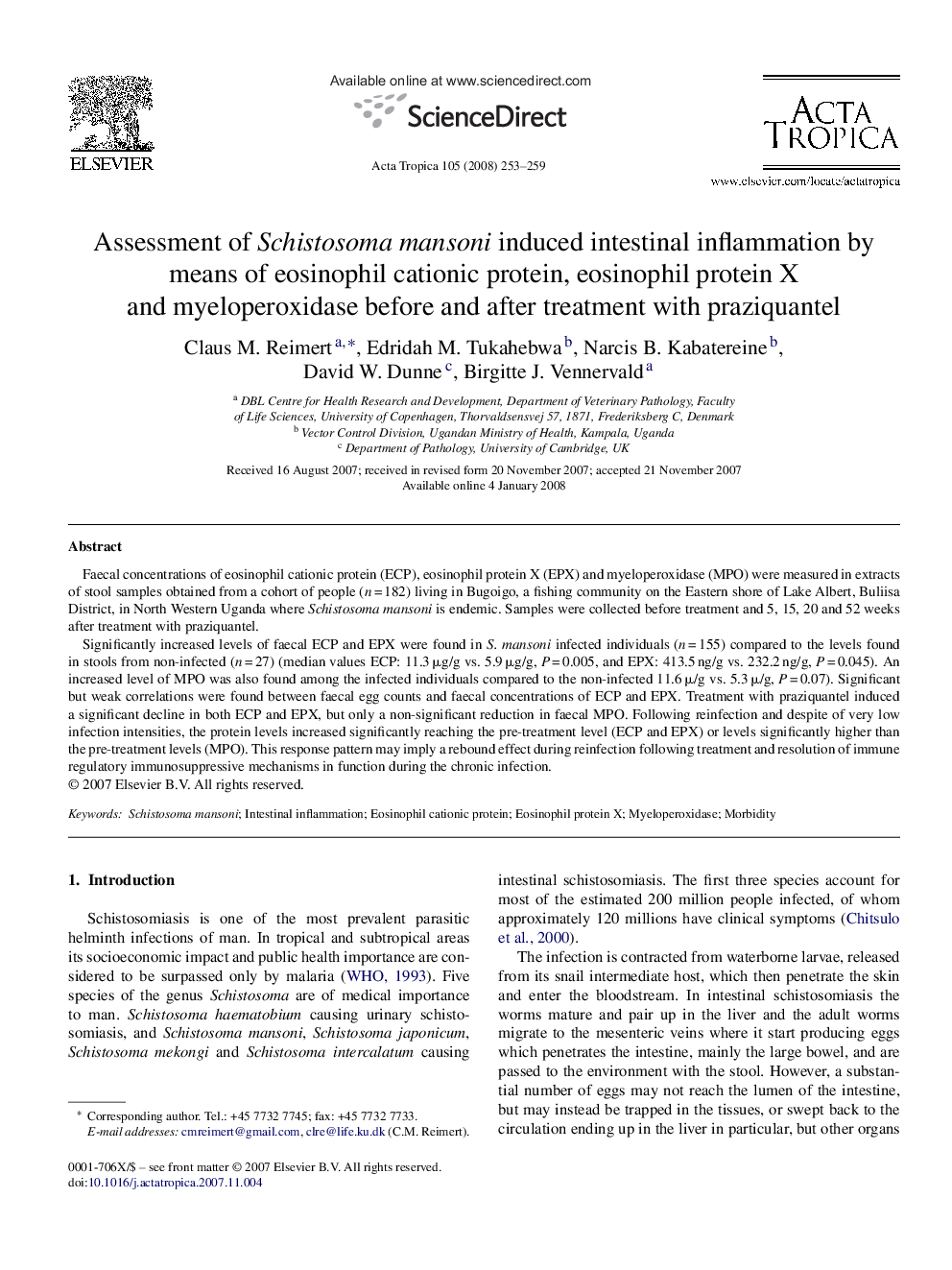| Article ID | Journal | Published Year | Pages | File Type |
|---|---|---|---|---|
| 3394656 | Acta Tropica | 2008 | 7 Pages |
Faecal concentrations of eosinophil cationic protein (ECP), eosinophil protein X (EPX) and myeloperoxidase (MPO) were measured in extracts of stool samples obtained from a cohort of people (n = 182) living in Bugoigo, a fishing community on the Eastern shore of Lake Albert, Buliisa District, in North Western Uganda where Schistosoma mansoni is endemic. Samples were collected before treatment and 5, 15, 20 and 52 weeks after treatment with praziquantel.Significantly increased levels of faecal ECP and EPX were found in S. mansoni infected individuals (n = 155) compared to the levels found in stools from non-infected (n = 27) (median values ECP: 11.3 μg/g vs. 5.9 μg/g, P = 0.005, and EPX: 413.5 ng/g vs. 232.2 ng/g, P = 0.045). An increased level of MPO was also found among the infected individuals compared to the non-infected 11.6 μ/g vs. 5.3 μ/g, P = 0.07). Significant but weak correlations were found between faecal egg counts and faecal concentrations of ECP and EPX. Treatment with praziquantel induced a significant decline in both ECP and EPX, but only a non-significant reduction in faecal MPO. Following reinfection and despite of very low infection intensities, the protein levels increased significantly reaching the pre-treatment level (ECP and EPX) or levels significantly higher than the pre-treatment levels (MPO). This response pattern may imply a rebound effect during reinfection following treatment and resolution of immune regulatory immunosuppressive mechanisms in function during the chronic infection.
